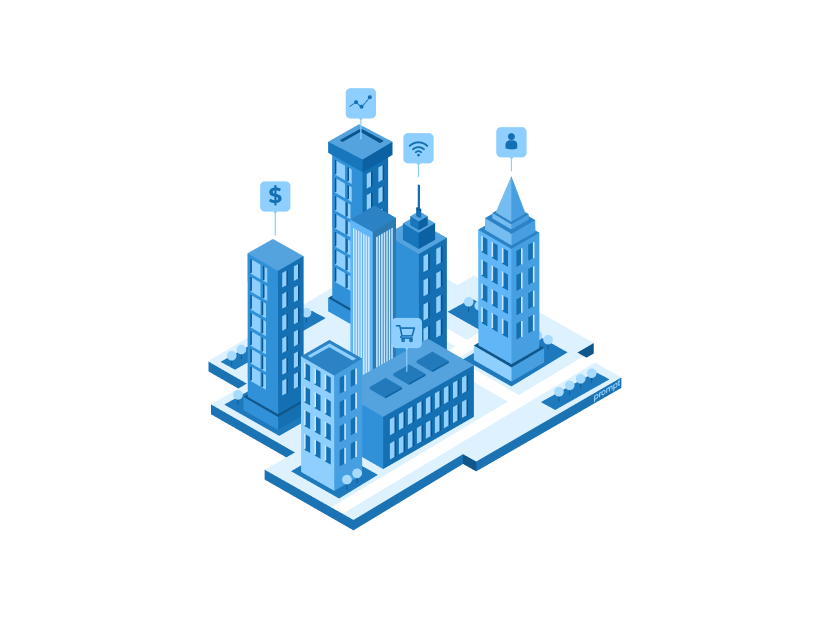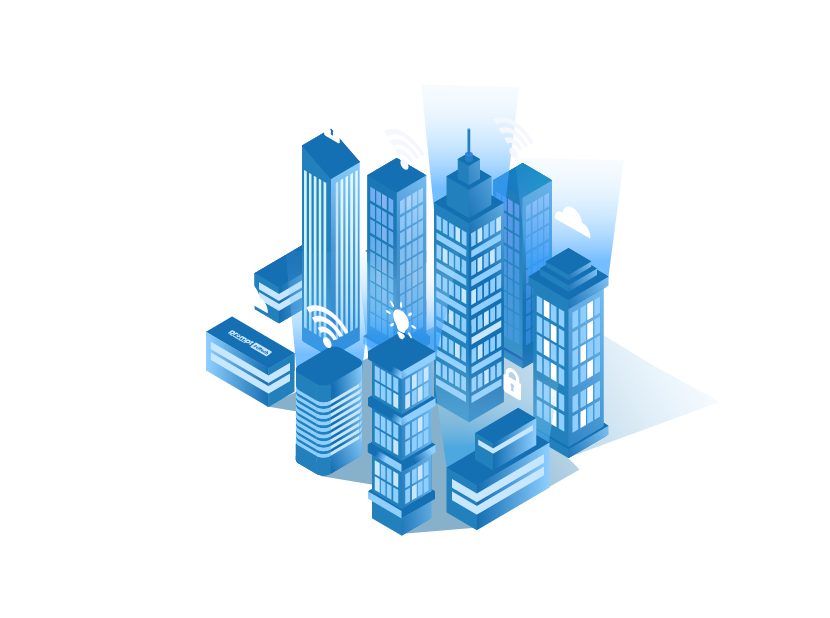Smart building technology is becoming a new fashion, fuelled by a global need for better sustainability, reduced waste, and optimal use of resources.
Smart buildings are accessorized with technological advancements of the latest technology, i.e., the Internet of Things, to manage resources, assets, and services effectively, boosting building operations, energy consumption and resource management, and overall resident experience.
Today, buildings are responsible for around 38 percent of global CO2 emissions and 40 percent of U.S. energy consumption; therefore, remodeling buildings’ energy consumption and sustainability are vital to meeting global climate goals.
To adapt this remodeling has already been made clear by U.S. President Biden’s administration, who informed the Buildings Performance Standards Coalition in January. It will be a first-of-its-kind partnership between 33 states and local governments working hard to deliver cleaner, healthier, and more energy-efficient buildings.
The process of optimizing energy consumption in the building sector is a gigantic undertaking; it can begin at the smallest level, i.e., from the tiny chips that power the IoT.
Smart buildings integrate IoT technology into many areas- from digitizing people’s flow and space usage to reconstructing water supply networks. One of the biggest prospects for smart buildings is revolutionizing energy consumption, beginning with smart energy distribution systems and smart HVAC equipment.
Smart Energy Distribution Systems:
Traditional energy distribution systems are positioned in a unidirectional fashion in which energy is expected to flow from generators into loads.
Usually, power plants generate energy and collect it in the urban centers of these systems.
The introduction and utilization of renewable energy sources like solar and wind have changed the picture of the energy distribution as the energy distribution system has to permit omnidirectional energy flow. A building that consumed energy could now integrate rooftop solar panels to produce and return excess energy into the grid.
Smart energy allocation systems authorize this omnidirectional energy flow and facilitate the integration of renewable distributed energies to collect energy back into the power grid. This whole system reduces energy consumption by enhancing the system’s efficiency and even uncloses a distributed energy generation model. Buildings are becoming energy producers and giving up their earlier character that is consuming energy, ultimately shifting towards green energy.
Advanced sensors and wireless IoT technologies are laying the foundation for smart energy grid transformation, where smart buildings play a pivotal role in fostering a greener, more connected power grid to shape a more sustainable future.
Smart HVAC Systems:
Smart HVAC systems are exciting evolution in smart buildings, which provides energy efficiency, air quality, and resident comfort. With the hit of the COVID-19 pandemic, vendors are looking at a shortened HVAC upgrade cycle. Dealers and distributors are integrating their HVAC systems with new and smart technologies. Today, when everything is shaping into a smart version, building residents are now expecting granular control of HVAC settings in each room and area of their building. In this situation, IoT is a savior as it adds a new level to the comfort experience inside the buildings.
Motorized vents and dampers integrated with wireless connectivity to phones and tablets allow residents to set the temperature and the CO2, humidity, and air quality. Building managers can also benefit from IoT connectivity to know the room occupancy, reduce energy usage, and optimize energy use throughout the premises.
Monitoring Building Health:
Monitoring building health is another important aspect of smart building growth areas. More environmental sensors are being added to buildings beyond traditional temperature and humidity. These sensors control smart dampers for better airflow and outdoor air exchange, manage connected equipment for predictive maintenance to avoid equipment failure, flow meters for real-time leak detection, gas sensors to detect air particles, and many other things.
We are already familiar with connected fire and smoke detection sensors, but with the addition of the latest technology, we can witness more wireless connectivity with long-range wireless and Bluetooth to develop an installer interface.
All three major applications, i.e., energy management, fire safety, and building health monitoring add more connectivity and digital capability.
The Importance of Reliability and Cybersecurity:
Well, aside from the great benefits offered by smart building, there are some challenges faced by smart building to be dealt with with skilled engineering.
The first challenge is technological: wireless networks of such complex systems should be reliable and stable. Though wireless mesh network technology is highly adept, vendors and manufacturers are required to ensure the reliability of their products to estimate the true potential of wireless networks in building environments.
Integrating wireless networks makes buildings vulnerable to cyber attacks. Silicon vendors and product manufacturers have stepped up their cybersecurity game to combat such threats. Uncompromised efforts and constant focus on security while developing and distributing smart solutions will be highly helpful in transforming the building sector.
A Smarter, Greener Future:
The best part about smart buildings is that they are not limited to just brand new structures; these buildings can be retrofitted with smart technology as well. Implementing wireless connectivity in existing systems allows for smooth adoption and speeds up the adoption of wireless communications in buildings.
The initiation of both public and private sectors to improve energy use in the building sector signifies that the coming years will be the era of smart building adoption. Today, when it has become important to reduce CO2 emissions in all sectors and maximize energy efficiency and consumption, the employment of the latest technology and the use of IoT in buildings can charter the way to sustainability and improve the quality of life for individuals and group level.










